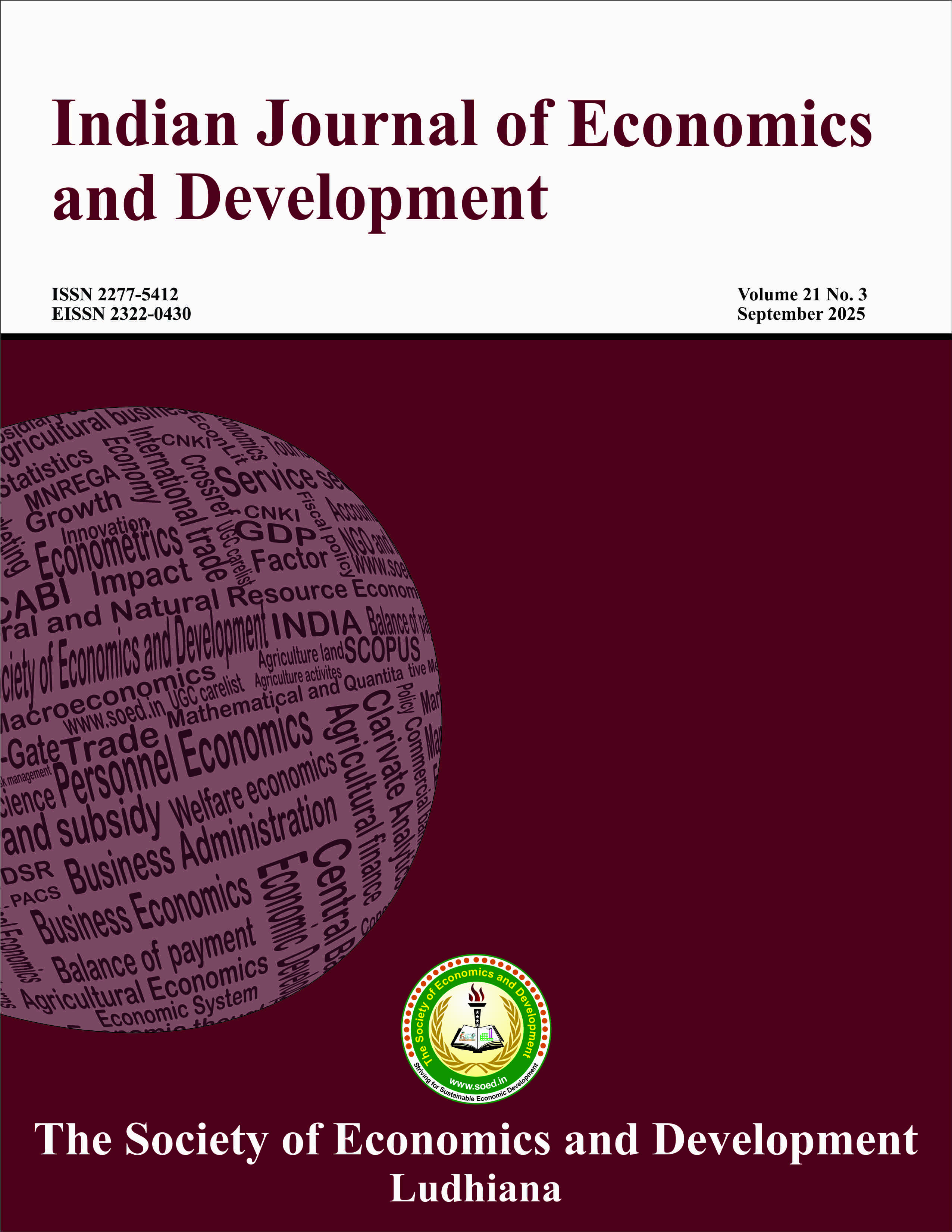Statistical Evaluation of Inter-State Variation in Educational Development of India

Price: ₹ 500
Author: Amrit Kaur Mahal, Pritpal Singh, Sunny Kumar and Simranjit Kaur
Author Address: Department of Mathematics, Statistics, and Physics, Department of Plant Breeding and Genetics, and Department of Economics and Sociology, Punjab Agricultural University, Ludhiana-141004 (Punjab)
Keywords: Composite index, development, educational sector, inter-state variation, regression analysis.
JEL Codes: C43, F63, I25.
Abstract
The study examined inter-state variations in educational development in India using secondary data from 2018–19 to 2020–21. Composite indices based on 26 indicators were evaluated for six zones and overall Indian states. Tamil Nadu, Goa, Kerala, Punjab, Maharashtra, and Sikkim emerged as highly developed states. The index ranged from 0.4599 (Tamil Nadu) to 0.9810 (Meghalaya), classifying states into high, high middle, low middle, and low development levels. Stepwise regression identified factors influencing educational development as number of schools, teacher availability, student pass rates, pupil-teacher ratio, gender parity, literacy gaps, and school infrastructure. Additionally, the study highlighted the declining share of education expenditure relative to GDP. Further, there is a need to increase public investments and improve infrastructure in underdeveloped states to reduce regional disparities.
Description
Indian J Econ Dev, 2025, 21(3), 564-575
https://doi.org/10.35716/IJED-25128



